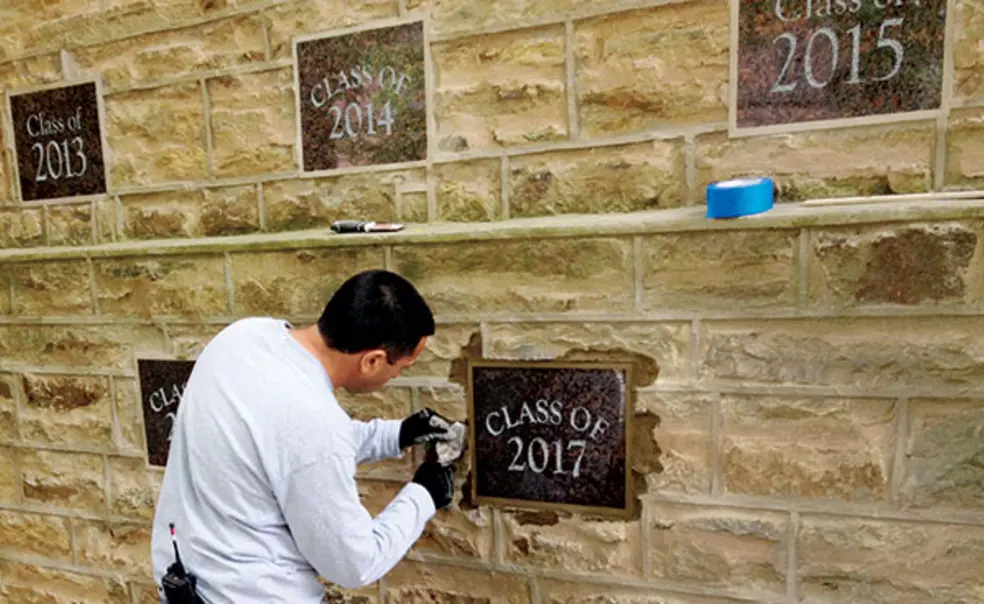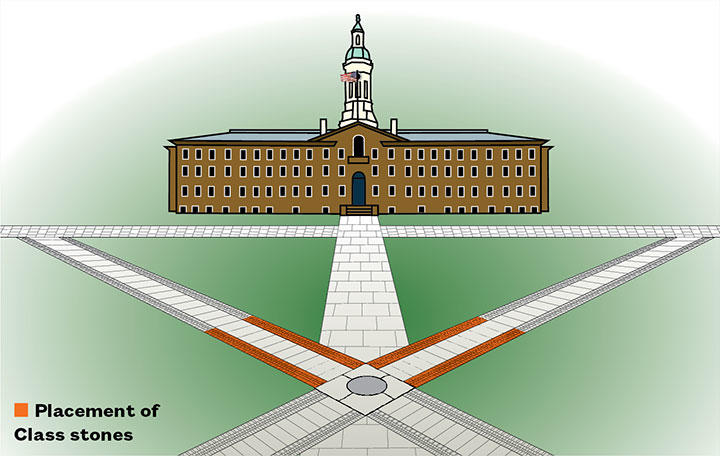Altered Tradition
With no more room on Nassau Hall, class stones to be set along walkways
For nearly 150 years, graduating classes have continued the tradition of placing a stone engraved with the class numerals (accompanied for years by a sprig of ivy) on the exterior of Nassau Hall. But space on the iconic structure has finally run out, and the University is looking to start a new class tradition next spring.
Starting from the large medallion bearing the University’s informal motto — “In the Nation’s Service and the Service of Humanity”— that is set into the path on the front campus, class stones will be installed in the ground on both sides of two walkways that extend in the direction of Nassau Hall.
“Each year, alternating sides, we would work our way back to Nassau Hall,” said Robert K. Durkee ’69, University vice president and secretary. Durkee said plans are for 17 classes without stones on Nassau Hall (ranging from 1946 to 2006) to be memorialized with the new stones in May, in advance of Reunions. He said he hoped the stone for the Class of 2018 could be installed immediately following Commencement.
In the past, classes have had to pay for their stones. “We anticipate this will also be true in the future, but for this transition year the University will cover the costs for the 17 older classes and for 2018,” Durkee said.
Alumni reaction to the plan was mixed.
“I think it will be really neat to be part of the new tradition,” said Class of 1981 president Jason Gold, whose class does not have a Nassau Hall stone. “I’m really glad that the University is addressing this.”
Christina Keddie ’03 added that a class stone “is a great way to connect students and alumni to the University, and having it in the same general area is a good continuation of the historical tradition.”
Tom Swift ’76, chair of the Princetoniana Committee, said the group has “varying opinions about where future stones should be placed. There is, however, agreement that the stones, wherever their location, must survive for many generations, and [there are] concerns that embedding them into the ground will work against this end.”
W. Barksdale Maynard ’88, who has taught Princeton architecture and written for PAW, said graduating classes might think it undignified to have their stones trampled underfoot. Before the 1890s, he noted, class stones were placed on various campus buildings, and classes planted ivy to beautify sites. “Why not return to this beautification emphasis?” he asked.
Durkee said that in conversations with alumni and students, “it was clear that they strongly preferred” a location on the front campus. He said the University looked at installing stones in the low walls along Nassau Street and in front of Chancellor Green, but space is limited “and even those locations felt distant,” he said.
He added that the medallion with the Princeton motto and the 9/11 garden stones are well-maintained, and that the University “would do the same” for the new class stones.













No responses yet